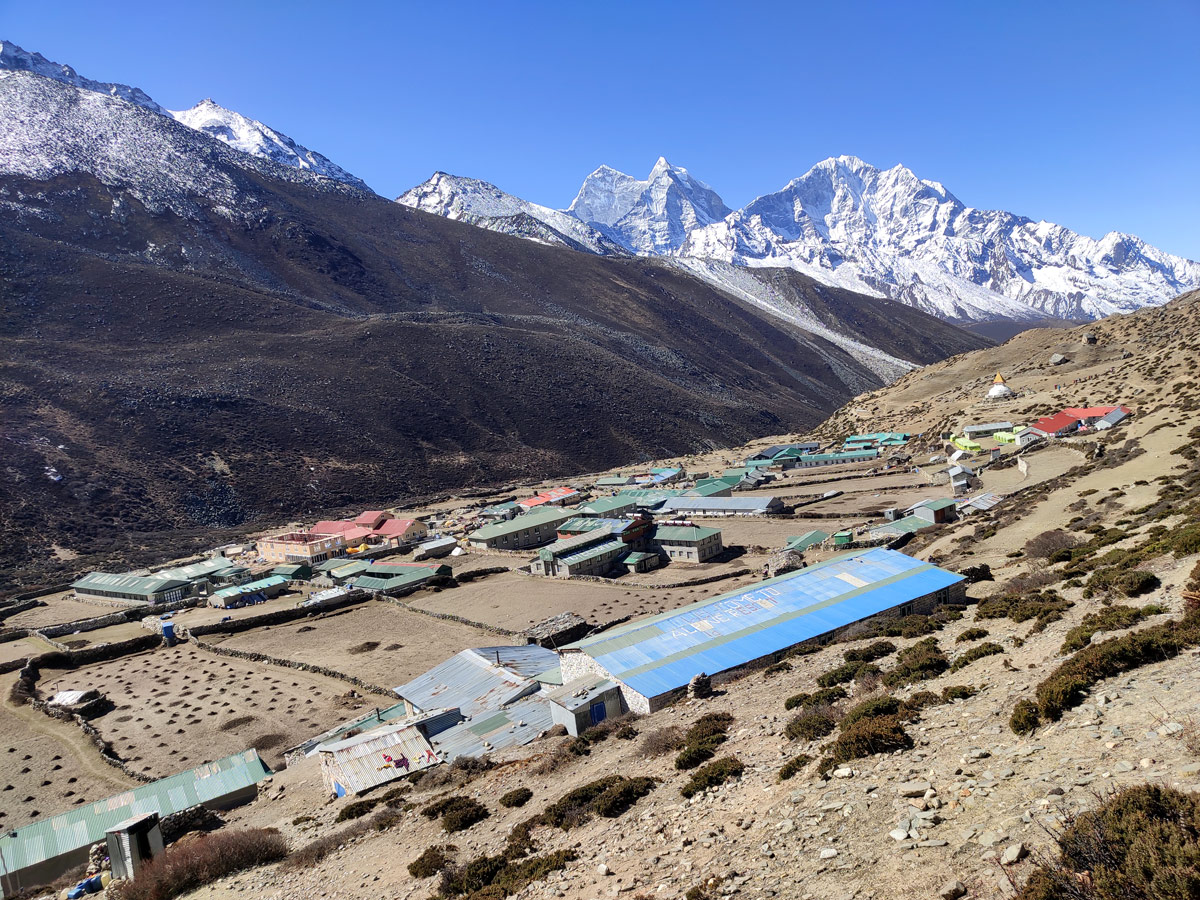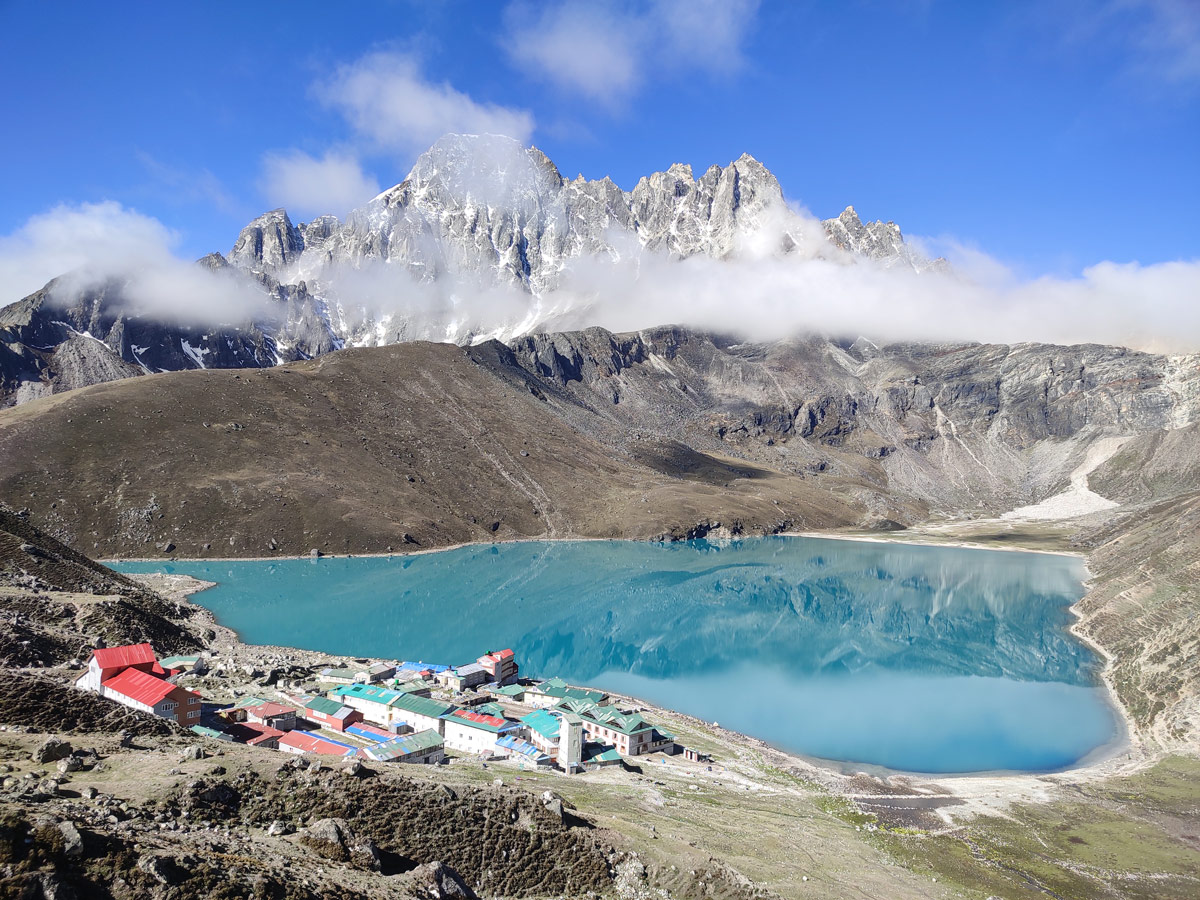Teahouse Trekking in Nepal

When it comes to exploring the Himalayas of Nepal, one might find unique ways to make the experience thrilling and fulfilling. Likewise, one of the most popular and convenient ways to explore Nepal is to opt for teahouse trekking in Nepal.
Imagine waking up to a beautiful symphony of birdsongs while you are surrounded by snow-clad Himalayas and in the comfort of somebody’s home where a warm plate of breakfast awaits you. Fascinating, isn’t it?
Teahouse trekking offers you a unique blend of adventure and cultural immersion, which makes it quite popular among trekkers. So, let’s explore the what’s and how’s of teahouse trekking in Nepal to help you figure out if this is the best option for you.
What is Teahouse Trekking?
The term teahouse trekking is quite famous in the world of trekking as most of the trekking routes across Nepal have now adapted to this mode of accommodation.
However, for the unversed, teahouse trekking is a form of trekking where the accommodation options are tea houses and lodges owned by local families of the region rather than open camping or staying in fancy hotels.
In teahouse trekking, you can expect basic yet comfortable accommodation along with delicious meals. You will also be provided with other basic facilities such as washrooms and sometimes even Wi-Fi and mobile connectivity.
This system started with the purpose of increasing the influx of trekkers in remote areas of Nepal, including the Everest Base Camp Trek and the Annapurna Base Camp Trek. Over time, teahouse trekking has become the standard mode for most trekking routes in Nepal.
While trekkers on camping treks are required to carry heavy backpacks, tents, food, and cooking gear, teahouses make the journey much more comfortable and convenient. Beginners can also find teahouse trekking easier to manage compared to camping.
Unveiling the Ultimate Experience of Teahouse Trekking in Nepal
When it comes to Nepal, teahouse trekking is not merely a unique experience in terms of accommodation; it is also a direct window into the rich culture and lifestyle of the region.
A typical day on a teahouse trek in Nepal often begins with a warm cup of tea and a light breakfast before setting off along the well-maintained trekking trails.
At a moderate pace, you will gradually ascend while enjoying the views and acclimatizing to altitude changes. As you reach your destination for the day, you will notice small villages dotted with tea houses offering warm hospitality and local food.

Perched on a hillside, a typical tea house provides a cozy dining area where trekkers can interact with fellow travelers and bond with the hosts over a plate of hearty Nepali dal bhat or noodle soup.
During rest or acclimatization days, you can stay in the tea house, read your book, chat with locals, or simply enjoy the panoramic mountain views with a warm cup of tea.
In some tea houses in the lower regions, you might even find amenities like Wi-Fi, hot showers, and laundry facilities, enhancing your trekking experience tenfold. Such facilities are commonly available during the best trekking seasons in Nepal
Popular Teahouse Treks in Nepal
The terrains of Nepal boast a wide variety of teahouse treks catering to the skill and experience levels of every trekker, from beginners to experienced adventurers.
From the popular trails of the Everest Base Camp Trek and Annapurna Base Camp Trek to quieter routes such as the Manaslu Circuit Trek and Everest Three Passes Trek, you will find cozy and charming tea houses on almost every major trekking trail in Nepal.
Depending on the route and its popularity, you can find both basic and well-facilitated tea houses.
For instance, you will find a wide range of options available on the Annapurna Base Camp Trek, as this route is more established and attracts trekkers from all over the world. Similarly, the Everest Base Camp Trek offers numerous tea houses with modern amenities such as Wi-Fi, hot showers, and laundry services along most parts of the trail.
Meanwhile, smaller and cozier tea houses can be found on remote trails like the Manaslu Circuit Trek. The only difference is that the number of available amenities tends to decrease with altitude and remoteness.
These differences also depend on the accessibility of the region, with more developed routes offering better facilities for trekkers. Families trekking with children can still enjoy the comfort of teahouses, making it easier to manage logistics.
Preparing for Teahouse Treks in Nepal
Although a fascinating and convenient option, teahouse treks in Nepal can still be physically demanding, especially for those lacking preparation. Therefore, it is essential to be well-prepared before embarking on such an adventure.
Physical Preparation
Being physically fit helps you handle the challenges of long walking hours, steep ascents, and varying terrains.
Start training a few weeks in advance, focusing on cardiovascular exercises such as hiking, cycling, swimming, and running. Strength training for your legs, back, and shoulders, as well as core workouts, can also make a big difference. Breathing exercises are helpful for adapting to higher altitudes.
Packing
While you won’t need all the camping essentials for a teahouse trek, you should still pack wisely. Include layered clothing for different temperatures, warm jackets, comfortable hiking boots, and essential personal items. For complete clothing guidance, check our detailed blog on what to wear while trekking in Nepal.
Carry your toiletries, medicines, water purification tablets, snacks, and a sleeping bag for extra warmth at high altitudes.
Depending on your trekking route, you can refer to a packing checklist provided by your trekking company to ensure that you have everything necessary.
Permits and Regulations
Almost all teahouse trekking routes in Nepal lie within protected regions such as national parks or conservation areas. Therefore, you will need valid trekking permits before entering these zones.
The most common permits include the Trekker’s Information Management System (TIMS) card and national park or conservation area entry permits. Some restricted routes, such as the Manaslu Circuit Trek, require special restricted area permits.
For more detailed information, you can read about the types of trekking permits in Nepal and where to obtain them.
Since solo trekking is currently restricted in Nepal, you are also required to trek with a registered guide. This rule ensures safety and helps trekkers navigate through remote sections of the Himalayas
Benefits of Teahouse Trekking
Cultural Immersion
Staying in a tea house allows you to engage with local families, observe their culture, and experience their traditional way of life.
From tasting authentic Nepali meals to watching daily village routines, teahouse trekking creates an authentic connection between trekkers and local communities. It also provides insight into the customs, festivals, and resilience of people living in high-altitude regions.
Budget Friendly
One of the greatest advantages of teahouse trekking in Nepal is affordability.
While total costs depend on the trek’s duration and difficulty, even the more remote routes remain economical. On average, expect to spend around USD 20–30 per day, which includes meals and accommodation.
This makes teahouse trekking a cost-effective alternative to staying in hotels or organizing camping treks.
Comfortable and Convenient
Compared to camping, teahouse trekking is both convenient and comfortable. You don’t have to carry tents or cooking supplies, which significantly reduces the logistical burden.
Most teahouses provide warm meals and shelter, allowing trekkers to rest and recharge for the next day. During evenings, shared dining areas become social hubs where trekkers exchange stories and enjoy the mountain atmosphere.
You might even find tea houses offering views of some of the best sunrise viewpoints in Nepal
Supporting Local Communities
By staying in teahouses, trekkers directly contribute to the local economy. The income generated from tourism helps families improve their living standards and sustain livelihoods.
You can further support the local economy by purchasing handmade souvenirs or local products from nearby shops. This aligns with the broader goal of sustainable trekking in Nepal.
Challenges and Considerations
While teahouse trekking offers many benefits, trekkers should also be aware of certain challenges.
Crowded Trails and Teahouses
During peak trekking seasons, teahouses can become crowded. Autumn (September–November) and spring (March–May) are especially busy months. To avoid inconvenience, it’s best to book your teahouses in advance.
Traveling during shoulder seasons or exploring offbeat routes can provide a quieter and more peaceful experience.
Variable Quality and Limited Amenities
The quality of teahouses varies depending on the region and altitude. In lower regions, tea houses may provide hot showers, laundry, and Wi-Fi. As you ascend, however, these amenities become limited.
At higher elevations, rooms may be basic with shared bathrooms or dormitory-style accommodations. This simplicity, however, adds to the charm and authenticity of the Himalayan experience.
To manage expectations, especially for first-time trekkers, refer to practical insights in the trekking in Nepal for beginners blog.
Tips for a Successful Teahouse Trek in Nepal
To make your trek safe, enjoyable, and memorable, keep the following tips in mind:
- Include acclimatization days in your itinerary to prevent altitude sickness.
- Stay hydrated and eat balanced meals to maintain energy levels.
- Carry some high-energy snacks such as chocolate bars or dry fruits.
- Respect local customs, dress modestly, and be polite when interacting with villagers.
- Learn a few basic Nepali phrases like “Namaste” and “Dhanyabad” to communicate easily.
- Keep your daily spending under control and always carry enough cash as ATMs are scarce in remote regions.
- Ensure that your travel insurance covers high-altitude trekking and emergency helicopter evacuation.
- Practice responsible trekking and follow the “Leave No Trace” principle by minimizing waste.
- Respect the natural environment and avoid disturbing wildlife or vegetation.
These small gestures make your trekking experience more rewarding while also protecting the fragile Himalayan ecosystem.
Why Choose Teahouse Trekking in Nepal
Teahouse trekking is a perfect balance of adventure, comfort, and cultural immersion. It allows you to explore Nepal’s dramatic landscapes while connecting with its people.
Whether you are a solo female traveler a group of friends, or a family with children, teahouse trekking offers both safety and authenticity.
It also reflects the true spirit of trekking in Nepal, where every step introduces you to breathtaking views, heartwarming hospitality, and cultural richness.
Final Thoughts
Teahouse trekking in Nepal combines the thrill of high-altitude adventure with the comfort of local hospitality. From sunrise views over the Annapurna range to evenings spent sharing stories around a warm fire in Namche Bazaar, each moment brings you closer to the heart of the Himalayas.
It’s more than just a trekking experience — it’s a cultural exchange, a contribution to sustainable tourism, and a journey into Nepal’s natural and human beauty.
So, whether you are planning your first trek or returning for another Himalayan adventure, consider teahouse trekking — a truly unforgettable way to experience Nepal.
